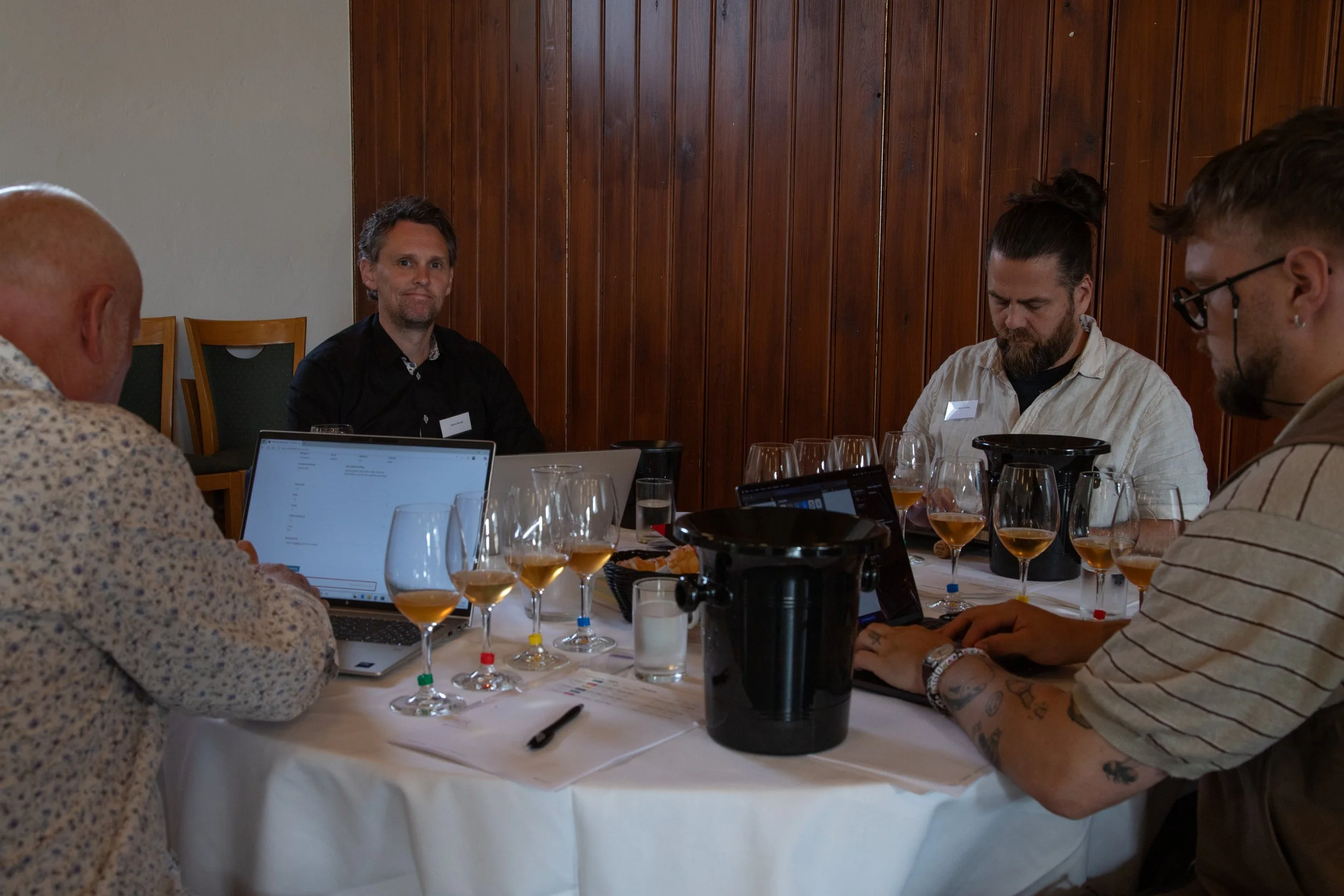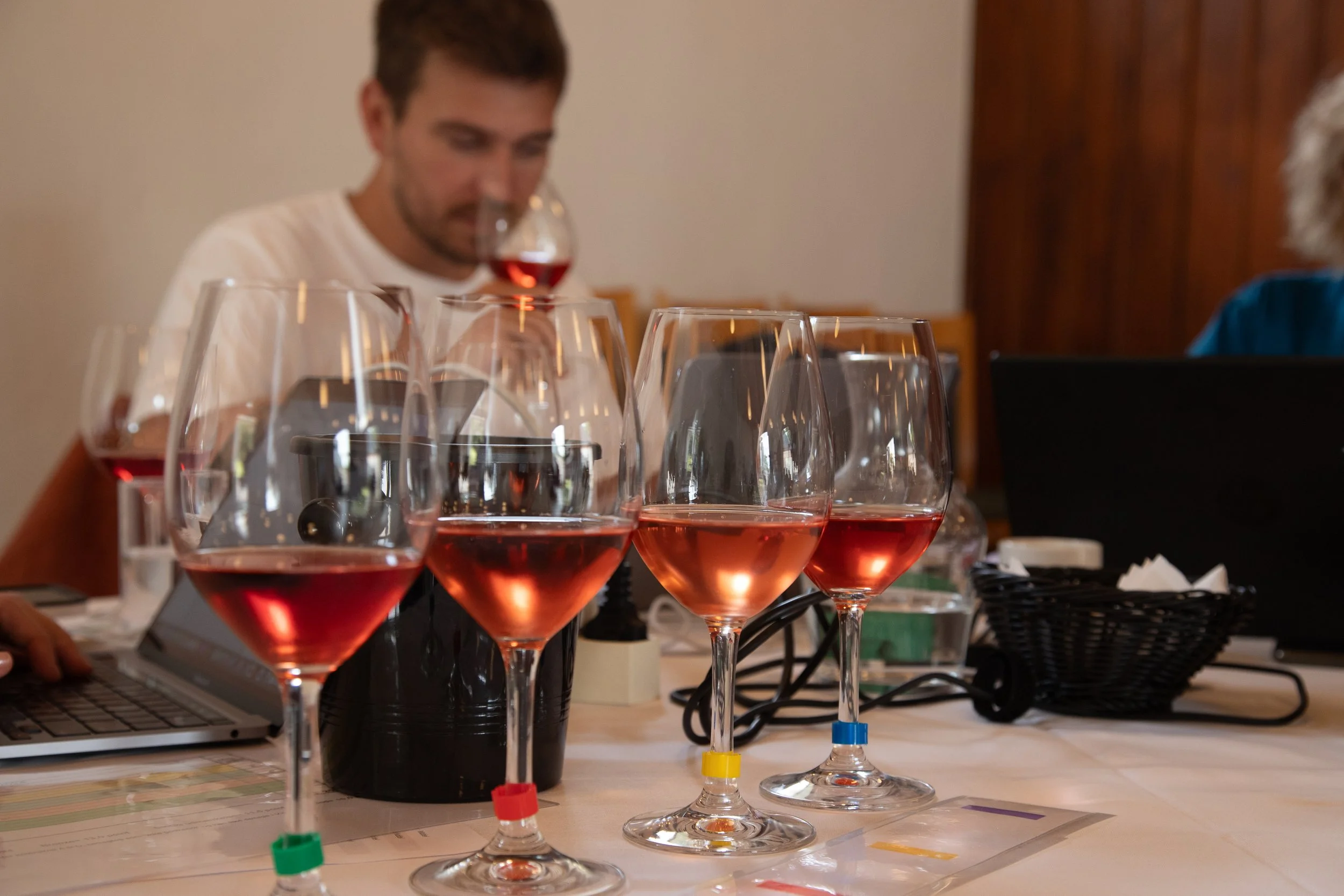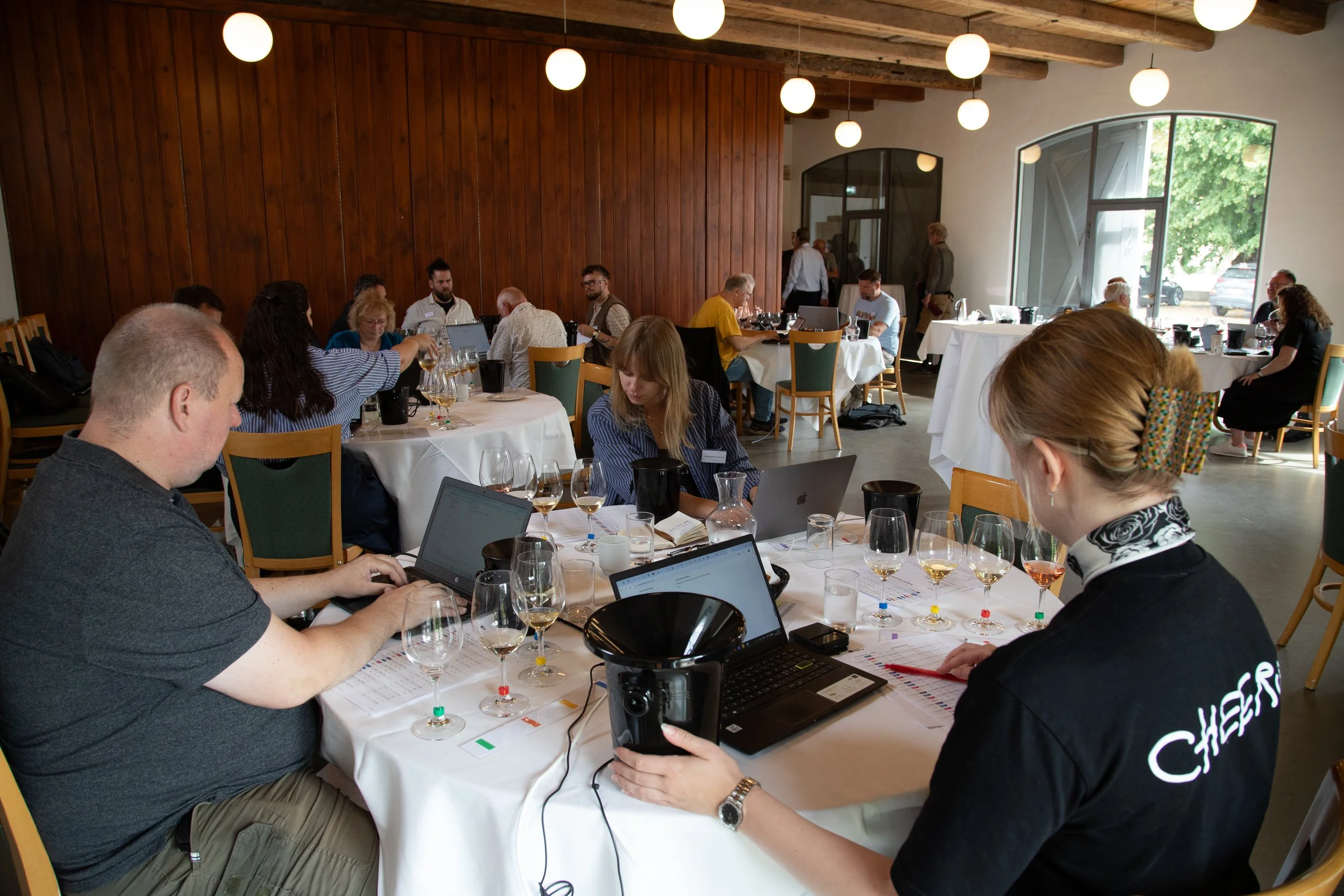Danish Wine Show 2025
Photo: Foreningen Dansk Vin
It's 5:40 a.m. when the alarm clock rings. It's Tuesday, August the 12th, and I've spent the last twenty minutes waiting for the familiar sound from my phone, telling me that the world has already woken up and I now need to get dressed and follow suit.
When I get into the car, I borrowed from my eldest son's best friend's mother half an hour later and drive out of the city of smiles, it's with the expectation that a little bit of everything awaits me this day. Just like last year, I've signed up to be a judge at this year's Danish Wine Show, which will once again be held at Svenstrup Gods, and I'm excited about another round of Danish wine.
Everything indicates that it's going to be a good day. The weather is good, the sun is quietly peeking out from behind the bright, light cloud cover and Svenstrup Gods is looking large, beautiful and expectant as I turn into the driveway three hours later and park the car in the enormous parking lot.
Photo: Foreningen Dansk Vin
Unlike last year, when 379 wines were registered, this year only 283 have been submitted, which Søren Rasmussen from the Danish Wine Association explains by saying that several of the major contributors have not sent their wines in this year, as the Awards Ceremony on September 20th is in the middle of the harvest. Part of the explanation could also be that the flowering in 2024 was difficult and that the quantities therefore were very small.
Regardless, I find my place at judge's table number 6, which is exactly the same table and place as last year, and find out that this year I have been assigned the categories cider, orange, fruit and dessert wine. The other judges are slowly arriving at the six other tables, before the chairman of the association, Hans N. Münter, welcomes us, followed by our own Tim Vollerslev, who talks about what we have signed in for.
Photo: Foreningen Dansk Vin
And then it's just about getting started. Of the 283 wines entered, there are 224 grape wines, 29 fruit wines/ciders and 30 meads, which will be judged by 23 judges. At our table, which in addition to myself consists of Palle Broløkke Bøgely – who I also sat at the table with last year – Mathias Breinholt and Morten Vinther, we will be judging 40 wines divided into 6 orange, 17 fruit wines, 12 ciders and 5 dessert wines. Each wine can be given up to a total of 20 points, 2 for appearance, 4 for aroma, 11 for taste and 3 for overall impression. If a wine gets a total of 11 points, it receives Special Distinction, 13 points Bronze, 14.5 points Silver and 16 points Gold.
We start with the orange wines and quickly find a good team rhythm, which makes it easy for us to evaluate the wines on the same basis. From the dry skin-macerated wines, we move on to the more berry-driven fruit wines, then to the dessert wines to finish with the ciders. When we reach the lunch break, we only have three wines left to evaluate, which is pretty good considering that there are two more hours at our disposal after the break.
In terms of quality, it is a mixed experience, but there are good wines within all four categories, especially the dessert wines maintain a high level. And it is fun with the huge variation in texture and taste we experience because of the different categories we have received. We start with dry wines, move on to fruity, then decidedly sweet and then dry and acidic. Danish wine can do many things by now!
Photo: Foreningen Dansk Vin
Of the 40 wines we judge, we give 11 Special Distinctions, 10 Bronze and 2 Silver. No Gold, but I wonder if the other tables have handed out a few handfuls to the best white wines. At 2:05 p.m. we are finished at the table, and I turn my nose home towards bright Jutland and Aarhus. Once again, I have been able to experience in which direction Danish wine is moving, what strengths and weaknesses we encounter, how far we have come and how much is left before we can really start competing with the great abroad.
Photo: Foreningen Dansk Vin
But one thing is already clear. The twenty best producers in the country make fantastic wine because over the past 20-25 years they have invested time in the field and the winery and money in equipment and oenological consultation. But what about all the other producers? Where do they stand? We have the grape varieties, the climate and the sea around us. The potential is there, which we have once again experienced at the wine show, but it has not been fully realized yet. When that will happen is uncertain, but I wonder if in the next few years, we will see even more producers take the professional leap and invest even more in Danish wine. If so, we are looking forward to a bright future; a time when Danish wine steps out of the dark shadows of curiosities and into the clear, fresh light of day. I am certainly looking forward to it.





